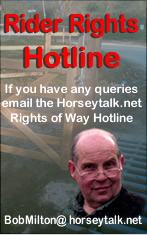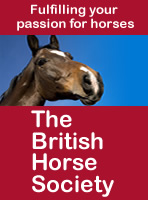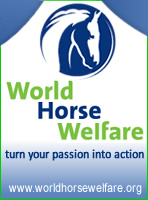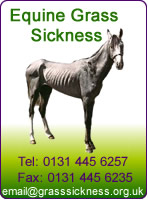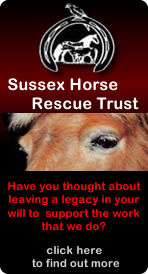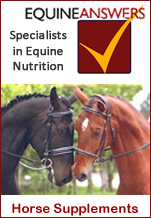
Horseytalk.net/Hoofbeat EXCLUSIVE
RIDER RIGHTS

Bob Milton and the Surrey Wildlife Trust
Letter from Surrey Wildlife Trust reveals reasons for increasing demands for grazing and all those self closing gates
At last, the real truth behind the push for grazing. To stop dog
owners from letting their dogs off ther lead with equestrians coming
off worse through the implementation of self closing gates.
Says Bob Milton
 The attached letter is the real back ground to the push for grazing. It is to dissuade dog owners from letting the dogs off the leads. This is the pressure brought to bear by the RSPB and all their followers with equestrians coming off worse through the implementation of self closing gates.
The attached letter is the real back ground to the push for grazing. It is to dissuade dog owners from letting the dogs off the leads. This is the pressure brought to bear by the RSPB and all their followers with equestrians coming off worse through the implementation of self closing gates.
The effect of all this fencing and grazing on the TBH SPA mitigation is that there will be a major displacement of dog walkers onto the few SANGs areas so removing the discounted capacity of those parts of Chobham Common and other public open space such as Farnham Park in Waverley to give the dog walkers the replacement land require by Natural England to meet the self imposed 2.4km circular free roaming dog walking areas under the Habitat Directive mitigation for development in the Thames Basin Heaths SPAs which applies equally to the adjacent Wealden Greensand SPA.
The letter also does not deal with the highway rights on the rights of ways.
Once again there is a complete lack of joined up thinking within NE and an ignorance of the principle of action and reaction
Read the letter from Fiona Haynes below:
Countryside Ranger, Surrey Wildlife Trust
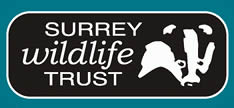 .....
Thank you for your recent correspondence concerning our poster about ground nesting birds and I apologise that it has come to you as a shock. However I will try and enlighten you on the reasons behind it.
.....
Thank you for your recent correspondence concerning our poster about ground nesting birds and I apologise that it has come to you as a shock. However I will try and enlighten you on the reasons behind it.
As site manager it is an intrinsic part of my job to safeguard the important wildlife on site. You will no doubt be aware that the site has a wealth of conservation designations including being a Site of Special Scientific Interest, Special Protection Area, Special Area of Conversation and National Nature Reserve; this is due to the range of wildlife the area currently supports. I should clarify the reasons behind the new posters requesting that people keep their dogs under control until September. The notice put up around Thursley Common last year was more in line with requirements under the CROW Act of 2000, which requests that dogs be under control or on a short lead between 1st March and 31st July. However it has come to light that we are unable to enforce this Act, as all the land is registered under Section 193 of the Law and Property Act 1925, so the posters recently erected are more specific to the site and are more indicative of how we would like visitors to respect the area. We are hoping to appeal to peopleís better nature by increasing their awareness. The fact is that the dates for nesting in the CROW Act do need revision as many birds will continue to raise broods later in the summer, including one of our rarest and most sensitive species, the nightjar. The reptiles are still active in September and therefore adders are still a concern if your dog runs through the heather.
It is true that many site users do appreciate the wildlife and do try and keep their dogs to the paths. However some users do not realise how important and sensitive some of the species are that reply on the heathland habitats. There is not a lot of information on site about the species present, or what it is that makes the site so important for wildlife, so many people could visit and not realise that it is the only breeding site in Surrey for the curlew for example, or that it has a range of rare ground-nesting birds as well as important reptile populations. Incidentally I hope you noticed that some of the posters have information about reptiles too. The reason I have put this information in is not only because I want to reduce disturbance to them, but also because I want to safeguard our canine visitors by better informing their owners. Adder bites are a real possibility and I for one worry about my dog going across the heather for that same reason as well.
I and the site manager of Thursley Common National Nature Reserve both spend a lot of time out on site and see many people letting their dogs run everywhere off the paths. I have approached many people to request politely that they could keep their dogs off the heather, and some people have been interested to learn about the birds and glad to be warned about adders, whereas other people have been less friendly and receptive to my request. Many visitors wouldnít realise the level of disturbance they could be causing by letting their dogs run off through the heathland, and wouldnít realise the danger they were putting their dog in by throwing sticks into the heather. It has probably been easy to miss the signs that we have previously put up which were mainly at the site entrances hence why we decided to increase the number of signs this year.
It is not a recent thing that dogs and indeed other animals and other site users have disturbed ground-nesting birds. However, it is only relatively recently that much scientific research has been conducted on the subject. It isnít necessarily that the dogs directly predate the birds, but more that young birds and eggs are easily trampled, and that adult birds are flushed from nests and unless they are able to get back to the nest quickly the eggs or chicks will go cold and perish, or be more susceptible to predation without the adult birds present. The effects of dogs on the breeding success of these birds have been well researched. Please see the attachments to this email for scientific papers on the subject.
I would also ask you to bear in mind that dog ownership levels are higher than ever before in Britain, the amount of heathland has drastically reduced by 86% in Surrey over the last 100 years, and the site has increasing numbers of visitors. The wildlife is therefore under increasing pressure. In the past, disturbance to wildlife wasnít as potentially damaging to populations, as the extent of habitat was far greater and the overall populations would have been more robust. For example Dartford warbler numbers were much higher even three years ago, but after the last two cold winters, their numbers have plummeted, and it is estimated they are down 96% in Surrey. Please see the attached document showing some of the declines in breeding bird numbers in recent years. Tree pipits, nightjars, meadow
pipits, whitethroats and reed buntings have all decreased noticeably on the Commons. Woodlarks in contrast appear to being doing well, probably due to the abundance of pioneer heather since the big fire.
We wonít be controlling the other predators of the birds as we wish to preserve the whole ecosystem. When we visit a site, we visit that ecosystem and add an extra level of disturbance that we can all help reduce. Many nature reserves around the country request that dogs be kept on the lead because of birds and other wildlife. This is not a recent thing across the country, and there are plenty of nature reserves that do not allow dogs at all. On many upland moors visitors are asked to keep their dogs under control or on a lead, and the RSPB, other Wildlife Trusts, and other organisations often ask the same of their visitors. Please see the RSPB information sheet I have attached.
I, along with many Wildlife Trust staff, own a dog so I do understand that a dog walk can be less fun for the dog if it canít run everywhere it pleases, and that it is less fun for the owner if they feel they have to restrict their dogs. However, it is possible to have a dog with you, give it a good walk, and still safeguard wildlife. The Wildlife Trust and Natural England are not anti-dog, and in fact my dog is usually with me at work.
Not every part of the site is as sensitive, and we arenít as concerned in areas of woodland, as it is the areas of heather and tussocky grassland and bog which are the most sensitive. I am prepared to pursue the idea of zoning with Natural England and the MOD, highlighting the most sensitive areas of the site so that people can let their dogs off the lead though the wooded areas in particular. However, the suggestion that maps should be displayed, showing those paths where birds are nesting is highly impractical. Finding all the nests and measuring how far they are from the nearest path would, in itself, cause a lot of disturbance to the birds. Furthermore, the situation will change over time, as many birds will have more than one brood over the course of the nesting season, and may choose to nest in different places for each, albeit still within their territory.
I am prepared to put up maps at Royal Common entrance, Gunners Lane entrance and Bagmoor Common showing the most sensitive areas so that dog owners can choose their routes accordingly. However, I do not want this issue to be confused with the public consultation, or indeed the MODís recent idea about dog zones. We would have put up these notices on site whether or not we were in the middle of a public consultation about the future management of the Commons. We have a duty to protect and safeguard the wildlife, and have had plenty of support from local residents and ornithologists to increase the number of notices about the disturbance to ground nesting birds. I can also assure you that the posters were very inexpensive to produce; approximately £12 for 40.
The MOD needs areas for military training purposes but there are no restrictions on the MOD land at any time of the year. However, if we use the argument that the MOD can go anywhere they like so we might as well all walk, run and drive wherever we like, off the paths, then we stand to lose our important wildlife. I donít want to get into extensive discussions over the public consultation and grazing of the site, and the potential impacts of cattle on ground nesting birds. However, with our current small grazing compartments, any effects are localised and we do survey areas before cattle go into them so that we can avoid the most sensitive areas. With our plans to extend the grazing across the site, we have been in discussion with the RSPB, Surrey Bird Club and other independent ornithologists, and our proposed stocking density is low enough that any effects will be negligible and easily outweighed by the benefits to the habitat, and in turn the birds. Please note that the organisations stated above support our plans.
I think the point is that all birds, especially ground-nesting species, are currently suffering a huge drop in numbers throughout Europe and becoming endangered. This is due to a variety of reasons, including habitat loss, agricultural practices, climate change and increased human populations. Disturbance by uncontrolled dogs is yet another factor that can at least be mitigated by people acting responsibly when walking their animals.
Yours sincerely,
Fiona Haynes
Countryside Ranger

